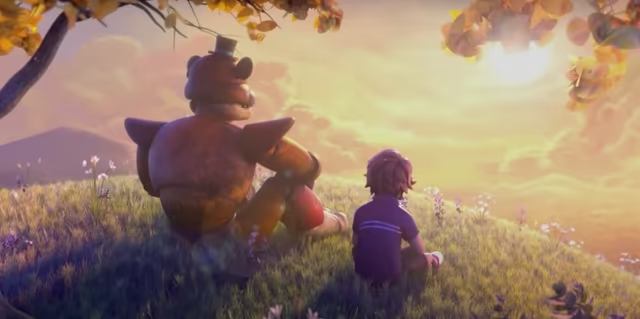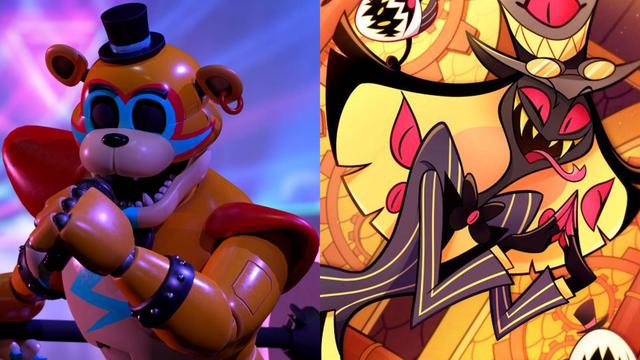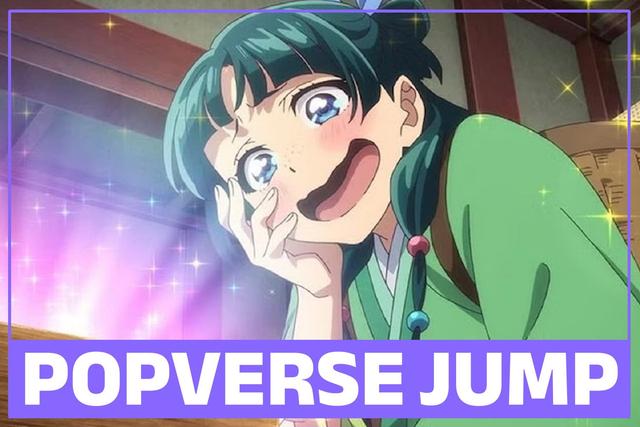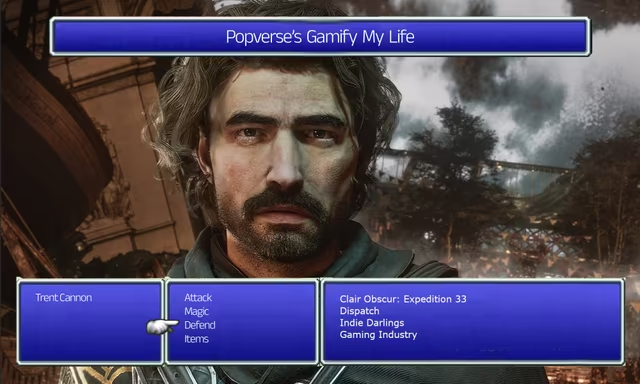If you click on a link and make a purchase we may receive a small commission. Read our editorial policy.
30 for 30: revisiting Vertigo's biggest and best, three decades later
Remembering DC's groundbreaking mature readers imprint through the lens of its comics

January 14, 2023 marked the 30th anniversary of the release of Death: The High Cost of Living #1, the first issue of the comic book series that launched DC’s Vertigo imprint, which makes it the 30th anniversary of the imprint as a whole. Born from the success of what had been unofficially called 'the Berger Books' — the 'Suggested for Mature Readers'-labeled series edited by Karen Berger, many of which centered around British writers like Grant Morrison, Peter Milligan, or Neil Gaiman — Vertigo was heralded as a new frontier for comics, and especially DC’s comics: an imprint for adults where the old limits didn’t apply.
For more than a quarter century, the imprint did its best to live up to that promise, with hundreds of ongoing titles and miniseries that helped set the mood not only for 'mature readers' comics, but mainstream American comics as a whole; without Vertigo’s example, much of Marvel’s output in the 21st century simply wouldn’t have happened — and not just because Jason Aaron’s big break was a Vertigo miniseries called The Other Side. (There was also Scalped, which he headed up for five years; it’s worth checking out.)
Beyond producing no shortage of original work across its lifespan before the imprint was shuttered in 2019 — its spirit lives on in the DC Black Label branding today, mind you — Vertigo was also responsible for some great reprints, including Kyle Baker’s The Cowboy Wally Show, J.M. DeMatteis and Jon J. Muth’s Moonshadow, and more. It was also responsible for multiple spin-off lines in its time, including Helix, the short-lived sci-fi Vertigo (where Transmetropolitan got started), Vertigo Crime, and Minx, the YA graphic novel line that sadly only lasted a couple of years.
Karen Berger stayed in charge of Vertigo until 2012, at which point longtime editor Shelly Bond stepped into the executive editor role. She would herself leave in 2016, with Jamie S. Rich — former Oni Press editor-in-chief — taking over for the last couple of years of the imprint.
Although Vertigo officially ended in 2019, it lives on in many ways — not least being the fact that much of this material remains in print from DC still. In fact, with the launch of DC Universe Infinite Ultra, a significant amount of Vertigo’s catalog is now available to read digitally for the first time, with all kinds of rare and wonderful discoveries to be made. (Check out Girl and The Unseen Hand, if you have the service.)
Beyond that, even some of the creator-owned work that DC no longer has the rights to has appeared elsewhere, with Dark Horse Comics and Image Comics both republishing work initially released by Vertigo. (Including a couple of titles in the list below.)
With all of this in mind, here’s a list of 30 of Vertigo’s best-known and best, for the imprint’s 30th anniversary. It’s far from a comprehensive list, but for those wondering just what Vertigo did to be so special… read on.
100 Bullets (1999-2009)

It was the comic that changed everything for Vertigo — the potent combination of writer Brian Azzarello, artist Eduardo Rosso, and an irresistible crime concept that won audiences over almost immediately. (How far would you go for revenge?) After this, Vertigo went heavy on crime comics, and fans loved it.
Available to read on DC Universe Infinite Ultra, Comixology, Amazon.
American Vampire (2010-2021)

Scott Snyder’s first major comic work launched with a collaboration with Stephen King and lofty ambitions: creating a uniquely American vampire mythology. Thanks to Rafael Albequerue’s artwork and a memorable cast of characters — Hi, Pearl, hi, Skinner — it succeeded, with the series even outliving the Vertigo imprint itself.
Available to read on DC Universe Infinite Ultra, Comixology, Amazon.
Animal Man (1988-1995)

One of the launch Vertigo titles, Animal Man had a groundbreaking Grant Morrison run early on, but what came under the Vertigo imprint remains criminally overlooked — especially the Jamie Delano-written issues, as Buddy Baker survives death, evolution gets weird, and his family falls apart. All this and Steve Pugh art!
Available to read on DC Universe Infinite Ultra, Comixology, Amazon.
Daytripper (2010)

The breakthrough project for Brazilian cartoonists Fabio Moon and Gabriel Ba, Daytripper is a touching, romantic story about the life not led — or, specifically, the lives not led, with each issue in the series exploring a different reality for its core protagonist, and the final days before his death(s).
Available to read on DC Universe Infinite Ultra, Comixology, Amazon.
Death: The High Cost of Living (1993)

Vertigo’s launch title was this three-issue spin-off from The Sandman, in which Dream’s more popular sister spends 24 hours actually alive… and realizes that it’s really not quite what she expected. Neil Gaiman was in fine form, but the real star of the series was Chris Bachalo’s expressive, beautiful artwork.
Available to read on DC Universe Infinite Ultra, Comixology, Amazon.
Doom Patrol (1987-1995)

Another title that has a visionary Morrison arc before the Vertigo imprint — source of much of the HBO Max show, natch — but Rachel Pollack’s time on the series shouldn’t be ignored; it’s, if anything, more weird and out there in ways that still seem shocking and exciting today.
Available to read on DC Universe Infinite Ultra, Comixology, Amazon.
Enigma (1993)

Vertigo’s first original, creator-owned series was Peter Milligan and Duncan Fegredo’s metatextual tale about queerness, alienation, and a superhero that really isn’t what he seems to be on almost any level. Oh, and there are lizards, too. Recently republished by Dark Horse’s Berger Books imprint, it’s well worth a look.
Available to read on Comixology, Amazon.
Fables (2002-2015)

The high concept behind Bill Willingham and Mark Buckingham’s magnum opus is simple and utterly effective: what happened after the 'happily ever after' at the end of all those fairy tales? Mixing genres with visible glee, the result is appropriately epic, if rarely able to resist poking fun at itself.
Available to read on DC Universe Infinite Ultra, Comixology, Amazon.
Face (1995)

Milligan and Fegredo’s one-shot follow-up to Enigma was, if anything, even tighter: the thriller about modern art, plastic surgery, and the lengths some will go to fulfill their obsessions just might be an example of a perfect one-issue comic book. Sadly out of print today; someone should fix really that.
Out of print. (Check those back issue bins.)
The Filth (2002-2003)

Grant Morrison and Chris Weston’s 13-issue meditation on the detritus of everyday life and pop culture had its gross-out moments, not to mention a perpetual feeling that something was wrong throughout the series — but there’s genuine heart to be found throughout, too. Think of it as an existential exorcism.
Available to read on DC Universe Infinite Ultra, Comixology, Amazon.
Flex Mentallo (1996)

Another key Morrison text, featuring Frank Quitely on art in his first big US work, this is at once a memoir about comic fandom, an essay on superhero history, and the ideal sequel to Crisis on Infinite Earths. In short, it’s far more packed than you’d expect for four issues.
Available to read on DC Universe Infinite Ultra, Comixology, Amazon.
Hellblazer (1988-2013)

Arguably the essential Vertigo title, Hellblazer lasted 300 issues and boasted runs by Jamie Delano, Garth Ennis, Brian Azzarello, and Peter Milligan amongst many others. John Constantine’s roots go back to Alan Moore’s Swamp Thing, but he remains a flag bearer for the Vertigo ideal long after the line’s closure.
Available to read on DC Universe Infinite Ultra, Comixology, Amazon.
Human Target (1999-2005)

Wrapped in Peter Milligan, Edvin Biuković, and Javier Pulido’s reboot of the classic DC character was one simple question: what does it mean to be who you are? Christopher Chance didn’t have an answer to that question, and that became more and more of a problem with deadly consequences… literally.
Available to read on DC Universe Infinite Ultra, Comixology, Amazon.
The Invisibles (1994-2000)

Grant Morrison’s magnum opus addresses the very nature of reality with a nod and a wink to everything pop culture from the '50s forward, which only feels fitting for the millennium fever it was created during. Want to find out how to save the world? Look for the blank badge.
Available to read on DC Universe Infinite Ultra, Comixology, Amazon.
Kid Eternity (1993-1994)

What started as a straightforward reboot by Grant Morrison and Duncan Fegredo went wonderfully off the rails when continued by Ann Nocenti and Sean Phillips that takes everything previously established and puts it into a blender to create a soup of beautifully funny, neurotic comics about modern life (and death).
Available to read on DC Universe Infinite Ultra, Comixology, Amazon.
Kill Your Boyfriend (1995)

Teenage rebellion meets British farce in this riotous one shot from Grant Morrison and Philip Bond, which give a particularly skewed take on the mid-‘90s trend of Tarantino-esque gunplay movies, courtesy of a particularly mundane teenage love story gone violently wrong in a world that doesn’t play by the cliches.
Available to read on DC Universe Infinite Ultra, Comixology, Amazon.
The Losers (2003-2006)

Andy Diggle and Jock’s reboot of the classic DC property dispensed with everything about the original aside from the name, replacing it with something wholly contemporary — a slick, fast-paced thriller that made the most of Diggle’s terse writing and Jock’s angular, dynamic artwork. Hard-hitting and fast and furious, say.
Available to read on DC Universe Infinite Ultra, Comixology.
Lucifer (2000-2006)

The Sandman spin-off about the first of the fallen shouldn’t have worked; who’d want to read a comic all about the devil in LA? When it’s created by Mike Carey and Peter Gross, the answer is “a lot of people.” Come for the Morningstar, stay for the free will determination.
Available to read on DC Universe Infinite Ultra, Comixology, Amazon.
The New Deadwardians (2012)

A forgotten gem from Dan Abnett and INJ Culbard, New Deadwarians reimagines post-Victorian British society as being full of the undead — both vampires and zombies, subject to a strict class system that keeps them apart. It’s a metaphor, but not the most outlandish, given the reality of actual history.
Available to read on DC Universe Infinite Ultra, Comixology, Amazon.
Preacher (1995-2000)

Maybe the finest hour for both Garth Ennis and Steve Dillon, Preacher allowed the two to funnel all of their obsessions — religion, western genre tropes, body horror comedy — into one glorious, over-the-top whole that also, ultimately, reveals just how sentimental they are underneath it all, as well. Also, there’s Arseface.
Available to read on DC Universe Infinite Ultra, Comixology, Amazon.
Prince of Cats (2012)

Criminally overlooked at the time of its release, Ronald Wimberly’s reimagining of Romeo and Juliet is an effortlessly stylish take that takes its lead from hip-hop, manga, and the underground scene of the '80s and ‘90s. The result is something entirely its own, and something still unmatched a decade later.
Available to read on Comixology, Amazon.
Sandman (1989-1996)

The big Vertigo book, even if more than half of it was published before Vertigo actually started. Neil Gaiman’s high fantasy had a lyricism that stood out in the comics landscape of the time, and inspired countless titles that followed. Not bad for a book about a guy named Dream.
Available to read on DC Universe Infinite Ultra, Comixology, Amazon.
Scene of the Crime (1999)

Years before Criminal, Ed Brubaker proved what he could do with crime comics in this mini created with Michael Lark: a missing persons story set in San Francisco that is every bit as hard-boiled and perverse as anything Brubaker has come up with since. It’s classic noir in modern clothing.
Available to read on Comixology, Amazon.
Shade the Changing Man (1990-1996)

Miles from Steve Ditko’s original version, Peter Milligan’s Shade is a series about love and obsession, and more than a little about madness as well… although your definition of madness might not entirely match with anyone else’s, which is the point. Chris Bachalo and Richard Case’s art only helps matters.
Available to read on DC Universe Infinite Ultra, Comixology
The Sheriff of Babylon (2016-2017)

Sheriff might not have seemed like obvious Vertigo fare immediately — a political crime story set in the Middle East, as a military consultant attempts to solve a murder while stymied by the various factions surround him — but Tom King and Mitch Gerads’ first collaboration was an instant classic.
Available to read on DC Universe Infinite Ultra, Comixology, Amazon.
Swamp Thing (1982-1996)

Alan Moore’s classic 1980s run on the cult muck monster character predated Vertigo by almost a decade, but influenced everything that came after, including some great Vertigo-era runs with the character. This is the book from which everything else — Vertigo and otherwise — sprouted. Yes, that pun was intentional.
Available to read on DC Universe Infinite Ultra, Comixology, Amazon.
The Twilight Children (2015-2016)

If the very idea of a collaboration between Gilbert Hernandez and Darwyn Cooke sounds too good to be true, wait until you check out the end result: a mix of magical realism and sci-fi, it’s the story of some kids with spooky powers and the adults mixed up with them.
Available to read on DC Universe Infinite Ultra, Comixology, Amazon.
We3 (2004-2005)

Another Morrison/Quitely collaboration, We3 is the ultimate story for the animal lover in your life, as long as they’re okay with seeing man’s inhumanity to animals portrayed as turning them into cyborg killing machines that just want to be loved. No, you’re still crying when you think about it, okay?
Available to read on DC Universe Infinite Ultra, Comixology, Amazon.
Y: The Last Man (2002-2008)

Brian K. Vaughan and Pia Guerra’s future post-male dystopia series captured the imagination of fans when it first launched, but if anything it reads even more powerfully in these pandemic times, with the prospect of the world suddenly changing for reasons no-one fully understands now being far easier to understand.
Available to read on DC Universe Infinite Ultra, Comixology, Amazon.
You Are Here (1999)

Kyle Baker’s 1999 graphic novel is the perfect movie romp never made, complete with a star-crossed romance, the threat of some ultra-violence, and a celebration of city life all delivered in a style that can only be described as Looney Tunes as created by MAD Magazine. It’s a riot.
Available to read via Amazon.
Of course, maybe you don't want Vertigo comics; that's okay, we also have a guide to the , as well...!
Follow Popverse for upcoming event coverage and news
Find out how we conduct our review by reading our review policy
Let Popverse be your tour guide through the wilderness of pop culture
Sign in and let us help you find your new favorite thing.
















Comments
Want to join the discussion? Please activate your account first.
Visit Reedpop ID if you need to resend the confirmation email.